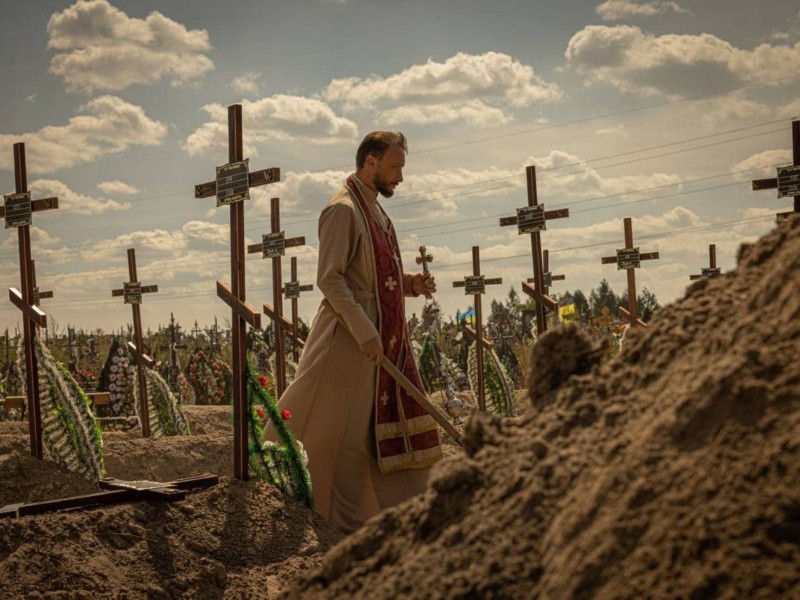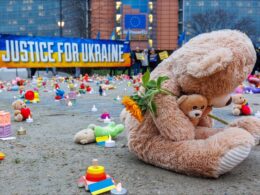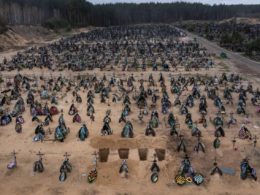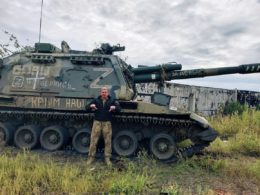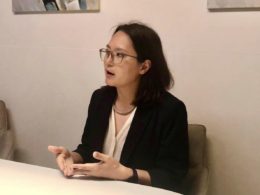“They [the Russian invaders] discovered a world different from the one they knew. And so they smashed it up, hit back at it, and are still trying to destroy it forever” (с) Anne Applebaum and Nataliya Gumenyuk
Since February 2022, the discussion concerning Russian responsibility for genocide has been more political than legal. Where it has followed the law, it has not followed the facts now being revealed in investigations by the Office of the Prosecutor General (OPG). Consequently, the debate has atrophied to a seesaw debate about whether the Russian forces are committing cultural genocide or physical/biological genocide (genocide) as defined by Article II of the Convention on the Prevention and Punishment of the Crime of Genocide (the Genocide Convention).
Russia’s cultural genocide against Ukraine
This binary is not particularly illuminating. As the OPG investigations show, there can be no doubt that Russian forces are working on a cultural genocide plan. Russia intends to destroy Ukraine as a nation through a concerted campaign of war crimes and crimes against humanity. It is at least a persecutory plan to occupy and subjugate the Ukrainians on (national, political, and cultural) discriminatory grounds for the express purpose of extinguishing Ukrainian identity.
“Ukraine has no right to exist, that it is historically Russian land and a fictional country created by Russian Bolsheviks” that has “never had a tradition of genuine statehood.” It was “Russia that created modern Ukraine” which has now been captured by Neo-Nazis and “[i]t definitely needs to be cut off completely, it is necessary to tell real facts, well, talk about what happened in recent history and what is happening now, and what can happen.”
How Russia justifies the murder of Ukrainians: Russia’s 2022 “genocide handbook” deconstructed
As made clear by the Russian state-owned news agency “RIA Novosti,” in its notorious article in April 2022 by the propagandist Timofei Sergeitsev, “What should Russia do with Ukraine?” the majority of Ukraine must undergo a process of “denazification.” This requires defeat on the battlefield and punishment of the population for their support of the Nazi government (“accomplices of Nazism”), followed by “ideological repression (suppression) of Nazi attitudes and strict censorship” across the political, cultural, and educational spheres. The Ukrainian population requires “de-Ukrainisation,” that is, “a rejection of the large-scale artificial inflating of the ethnic component of self-identification of the population of [Russian historical] territories,” and “de-Europeanisation.” Anything pro-Ukrainian or pro-European should be eliminated “as Nazism.”
- rapidly securing control over targeted areas of Ukraine
- the capturing and killing (or inducing to collaborate) of government and military/security leaders
- filtration of the remainder of the population (enabling detention, displacement, neutralization, and disintegration of Ukrainian society)
- thereafter, re-education of the population as a whole (see RUSI, pp. 10-11)
Ukraine could then return to its “rightful place:” part of “the large Russian nation.”
Russia had a secret plan to wipe Ukraine off the face of the Earth. This report tells why it failed
Of course, cultural genocide cannot be implemented without recourse to widespread and systematic war crimes and crimes against humanity.
- the capture and extermination of “leaders” in occupied territory
- arbitrary imprisonment, enforced disappearances, and torture of anyone considered to be “pro-Ukrainian” (political, military, security, and cultural)
- the effective enslavement, sexual violence, and/or deportation of the remainder (e.g., of children for “re-education” )
- the infliction of a range of other inhumane acts on the basis of national, political, and cultural grounds
- thereafter, the eradication of all Ukrainian economic, social, and cultural life (IICI, §§60-98; UNHRMMU, §§41-44, 49, 51-55)
A question of physical genocide
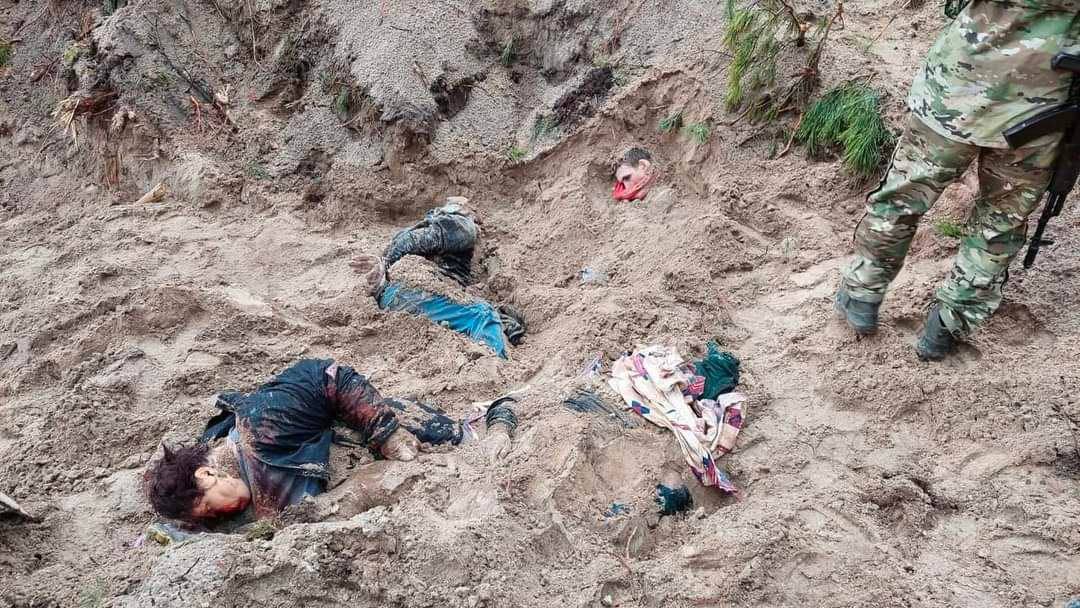
Concerning the question of physical (not cultural) genocide, the starting point is the recognition that the litany of war crimes and crimes against humanity include all, or almost all, of the acts ((a) to (e)) outlined in Art II of the Genocide Convention that, when committed with the relevant special intent (the dolus specialis), constitute genocide.
- the killing and infliction of serious bodily or mental harm to Ukrainians
- the deliberate infliction of conditions of life capable of bringing about the physical destruction of Ukrainians as a group and the forcible transfer of Ukrainian children into Russian families
However, these acts do not automatically equate to genocide.
Genocide requires the commission of these acts with intent to (physically or biologically) “destroy in whole or in part, a national, ethnical, racial or religious group, as such.” A mere intention to discriminate against Ukrainians in order to extinguish identity through these acts will amount to cultural genocide, but not, without more, genocide.
Indeed, these acts may be “quite indistinguishable from war crimes and describe atrocities that are frequently committed in many armed conflicts.”
Early stages of the genocidal campaign or plan with a conditional intent
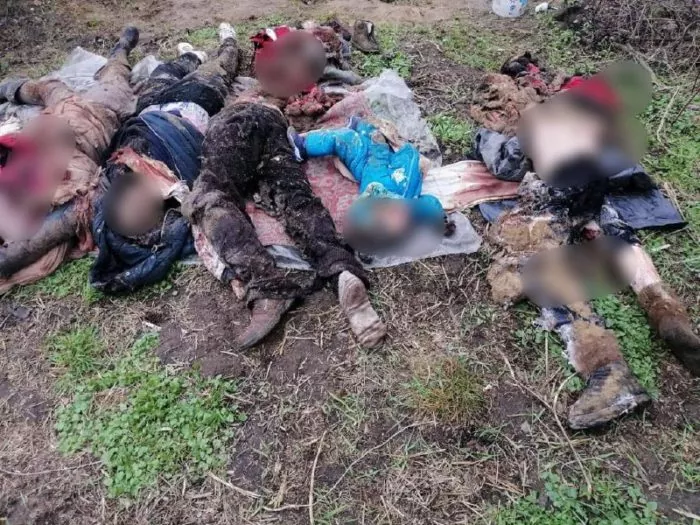
But that does not mean the question can or should be reduced to a debate concerning whether Russia is engaged in cultural genocide or genocide as defined by the Genocide Convention. Indeed, as discussed below, the Kremlin’s plan is ambitious enough to involve both.
Crucially, the law of genocide does not require that an intent to physically or biologically destroy be the sole or primary purpose of the perpetrator (see Bagosora, §2115, Simba, §269). A persecutory, cultural genocide campaign may, depending upon the nature and scope of physical destruction intended, encompass a genocidal campaign or be the ideal departure point from which it (readily) develops extemporaneously.
The nature and scope of the physical destruction intended are key. Cultural genocide plans involve the physical destruction of protected groups, in whole or part, to a greater or lesser degree. At one end of the spectrum, some plans may intend physical and mental harm but eschew the type of mass killings or other conditions or harm capable of long-term damage to the victims that threatens the physical existence of the group. At the other, some plans actively intend the physical destruction of parts of a protected group.
In other words, some plans are remote from a physical genocide, while others may actively include it as a stepping stone towards fulfilling the cultural genocidal plan or laying the foundation for a later genocidal campaign. It all depends upon the nature of the cultural genocide plan and the degree and focus of any intended destruction therein.
As the OPG’s early investigations show, Russia’s persecutory plan for cultural genocide contained a variety of physically destructive acts and significant elements of a genocidal plan. As mentioned, it includes most, if not all, of the Article II acts.
Significantly, at its core, it first included targeting political leaders for death and a significant part of the population for severe physical and mental harm, the harm that was highly likely to physically impact Ukrainians as a protected group in hugely detrimental ways.
The destruction of a section of the Ukrainian group – the leaders – was intended to leave the remainder of the population vulnerable to a variety of persecutory conduct, including extermination, mass detention, deportation, torture, and displacement, the abduction of Ukrainian children, and the infliction of a variety of deprivations (heat, water, medicine, and so forth) designed to undermine their ability to resist.
Whilst these acts were, at least initially, aimed at the destruction of Ukrainian identity, there can also be little doubt that many of them were also intended as a means of destroying Ukrainian “leaders” and weakening the ability of the Ukrainians to survive as a group – at least without accepting to be subjugated to the Russian empire.
Thus, the question of whether it was, or became, genocidal can only be answered by examining the war crimes and crimes against humanity in the original plan to ascertain whether this “Russification” process also included, or came to include, an intention to destroy, a substantial part of the Ukrainian people.
Russia’s cultural genocide against Ukrainians morphing into a genocidal campaign
As Putin’s evolving and hardening rhetoric suggests, it is highly likely that the initial cultural genocide plan quickly evolved into a genocidal campaign. We certainly know that the initial plan did not survive contact with Ukrainians’ courageous military and political resistance.
At the outset of the full-scale invasion, Putin’s perverse planning rested on a belief that “Ukrainian authorities” or the “nationalists” had “taken Ukraine hostage and are trying to use it against our country and our people.” Thus, the Ukrainian population were “hostages” of the “Nazi regime.” At this early stage, the part of the population deemed to be hostages (and therefore redeemable) may even have included the military.
On 25 February 2022, Putin appealed to the servicemen of the UAF, stating
“Do not let neo-Nazis and Bandera use your children, your wives, and old people as human shields. Take power into your own hands. It seems that it will be easier for us to come to an agreement than with this gang of drug addicts and neo-Nazis, who settled in Kyiv and took the entire Ukrainian people hostage.”
Russian propagandists must be tried for inciting genocide and war – international lawyer
However, by early March 2022, as Russia’s cultural war demonstrably failed, the narrow conception of who should be targeted for death and destruction began to expand from a small band of “Nazi leaders” to those who had been
“duped by Nazi nationalist propaganda, and someone deliberately, of course, followed the path of Bandera, other Nazi henchmen who fought on the side of Hitler during the Great Patriotic War.”
The influential Russian propagandist and head of the state-controlled media group Margarita Simonyan echoed this shift in rhetoric.
On 26 March 2022, she claimed “It’s no accident we call them Nazis … What makes you a Nazi is your bestial nature, your bestial hatred and your bestial willingness to tear out the eyes of children on the basis of nationality,” adding that “a significant part of Ukraine, of the Ukrainian people, turned out to be in the grip of a Nazi frenzy.”
How state propaganda is driving Russia’s genocide of Ukraine
As discussed, on 3 April 2022, the Russian state-owned news agency “RIA Novosti” published the article by the Russian propagandist Timofei Sergeitsev titled “What should Russia do with Ukraine?” indicating the Kremlin’s view that “a significant part of the masses” that tolerated and supported “the Nazi power” had to be targeted for “just punishment.”
The OPG’s evidence of the crimes reflects these changes. Instead of a more limited range of destruction aimed at the Ukrainian Government for the express purpose of “liberating” the remainder, the destruction grew exponentially. Faced with “Nazis” all around, the Russian plan to destroy a small(er) segment of society – a narrower band of Ukrainian political (and military) leaders – may have turned to a plan to commit Article II acts (killing, injuring, creating conditions calculated to destroy and abducting children) with the express intention of destroying the part of the group essential for survival and others deemed pro-Ukrainian.
These included a range of individuals necessary to protect the Ukrainian civilian population from physical harm (military, SSU, police, and so on) and those essential to the organization of civilian life and ordinary civilians (public servants, journalists, business owners, and so forth).
Instead of Zelenskyy and central government being to blame, now “loyal, conscientious, popularly elected small-town and village [pro-Ukrainian] mayors,” law enforcement, relatives of Ukrainian soldiers, local veterans and patriots, public servants, activists, journalists, religious leaders, educators, and civil society volunteers, were equally responsible.
Indeed, anyone suspected of being pro-Ukrainian (see also here) were to be destroyed. This ever-growing list was now targeted for detention, torture, death, or deportation.
At the same time, the Russian campaign to destroy vital civilian infrastructure required to provide water, sanitation, electricity, and health services that might support the survival of the beleaguered civilian population also gathered pace. This destruction was supplemented by escalating violence on ordinary civilians, and the campaign of children transfer, including from local hospitals and orphanages to Russia.
Law on genocidal intent: establishing substantiality
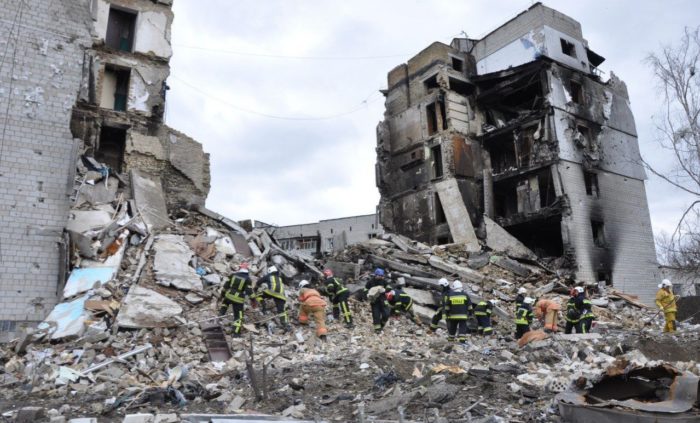
As discussed, genocide may be established when it is shown that a perpetrator intended to annihilate the whole or part of the group. Establishing genocide on the latter basis requires proof that the perpetrator intended to destroy a “substantial” part of the group. Whether the initial cultural genocide plan intended a substantial part of the Ukrainian population to be physically destroyed to enable the subjugation of the remainder is not yet clear.
Unfortunately, the law is unclear on what constitutes a “substantial” part of the group. A case-by-case approach must be adopted. What must be assessed is the potential effect on the “fate of the rest of the group.”
The number of would-be victims as well as the proportion of the targeted individuals relative to the size of the group as a whole are factors relevant to making that evaluation. The individuals considered in this numerical assessment include any member of the targeted group regardless of status, including civilians and/or military personnel.
Furthermore, consideration should be given not just to the immediate victims of the crimes but also to those who, indirectly but personally, have been affected by these crimes.
However, there is no specific number that must have been targeted. Further, there is no requirement that a particular accused must be responsible for a large number of deaths or harm. Whilst the accused must have intended to destroy part of the Ukrainian group, s/he does not need to have been personally involved in a large number of crimes. A single criminal act, if carried out with the requisite intent, can qualify as an act of genocide. Critically, numbers are not the only relevant criteria used to assess substantiality: qualitative factors are highly relevant.
Indeed, in Ukraine, the nature of who is targeted may be more important than the numbers. The fact that a specific part of the group is emblematic of the overall group or essential to its survival will satisfy the requirement of substantiality notwithstanding size.
These considerations were explicit in Tolimir and Jelisic, where the International Criminal Tribunal Yugoslavia, Appeals Chamber confirmed that
“genocidal intent may […] consist of the desired destruction of a more limited number of persons selected for the impact that their disappearance would have on the survival of the group as such.”
Thus, the specific nature, prominence, and composition of those targeted must be assessed. In particular, the importance of the targeted individuals as members of the Ukrainian nation, particularly their prominence within that group, their leadership role, or the strategic importance of the targeted individuals to the physical or social survival of the group, must be carefully considered assessed.
Moreover, other contextual factors may be important in establishing substantiality. The reach of the perpetrators, in particular, the opportunity presented to them to target members of the group, the perpetrators’ area of activity and control, the strategic importance of the group-members’ area of settlement, or the risk that a regional massacre will kindle a large-scale genocidal frenzy may be amongst the important issues to consider when assessing intent in relation to the targeted part. The applicability of these factors, as well as their relative weight, will vary depending on the circumstances of a particular case.
Conclusion
Thus, we should not be surprised that the Chair of the UN’s Independent Commission of Inquiry refused to be drawn on genocide when questioned about the Commission’s Report, dated 15 March 2023. As discussed herein, to assess who is responsible for genocide in Ukraine, the analysis will “have to go step by step” through war crimes, crimes against humanity, and cultural genocide.
As discussed above, genocidal intent cannot be discerned from the mere analysis of war crimes (“of excessive incidental death, injury, or damage, wilful killings, torture, inhumane treatment, unlawful confinement, rape, as well as unlawful transfers and deportations”), even if they encompass most, if not all, Article II acts. To establish genocide, the conduct of the Russian perpetrators must be situated in the context of a manifest, escalatory pattern of similar conduct (that is, at least, evocative of physical genocide) that demonstrates their awareness of an overall genocidal objective or campaign and their contribution to it.
A robust investigation will include an analysis of:
- how the original plan may have incorporated genocide;
- how the destruction evolved from a focus on the Ukrainian government and leaders essential to protect and sustain communities into a systematic commission of Article II acts against anyone who was allegedly associated – even remotely – with being pro-Ukrainian (IICI, §63, 72; UNHRMMU, §79; UNHRMMU, §48, 50, 55, 77);
- and how the perpetrators optimized their opportunities to pursue the senseless destruction of Ukrainians in cities and towns like Bucha and other Kyiv suburbs, Chernihiv, Kharkiv, Izium, Mariupol, Kherson, and other localities of the occupied territories of the Ukrainian East and South.
Accordingly, much work is to be done to map the contours of the original plan, the multiple patterns of war crimes, crimes against humanity, and the (individual and collective) destructive intent that, at the very least, escalated in the face of Ukrainian resistance. As discussed, a Russian perpetrator may initially have intended the crimes to achieve cultural genocide but, later, in the awareness of an overlapping or emerging genocidal campaign, formed genocide’s special intent. He would then be responsible for the commission of war crimes and crimes against humanity that constitute cultural genocide and genocide contrary to the Genocide Convention.

Wayne Jordash is the Director of Global Rights Compliance Foundation and a world leading lawyer specializing in international human rights and humanitarian law, particularly in high risk and conflict-affected areas.
Read more:
- Ukrainians in New York protested the United Nations report, which failed to classify the actions of Russian troops in Ukraine as genocide
- Russian torture chamber network in occupied Ukraine part of strategy to extinguish Ukrainian identity – lawyers
- What’s wrong with Amnesty International’s conclusions that “Ukrainian fighting tactics endanger civilians”
- This is what genocide looks like: Russian torture chambers in Kharkiv Oblast
- “This is ordinary genocide in the 21st century.” Ukrainian police chief on Russian war crimes
- Unpunished evil grows: Ukraine war rooted in Russia’s impunity for Chechen genocide
- Russia had a secret plan to wipe Ukraine off the face of the Earth. This report tells why it failed
- The Ukrainian Aleppo, or unprecedented terror in Borodianka – Dispatch from Ukraine
- Putin’s ‘Z’ symbol echoes Hitler’s swastika in pointing to a final ‘solution’ of Ukrainian problem, Svanidze says




